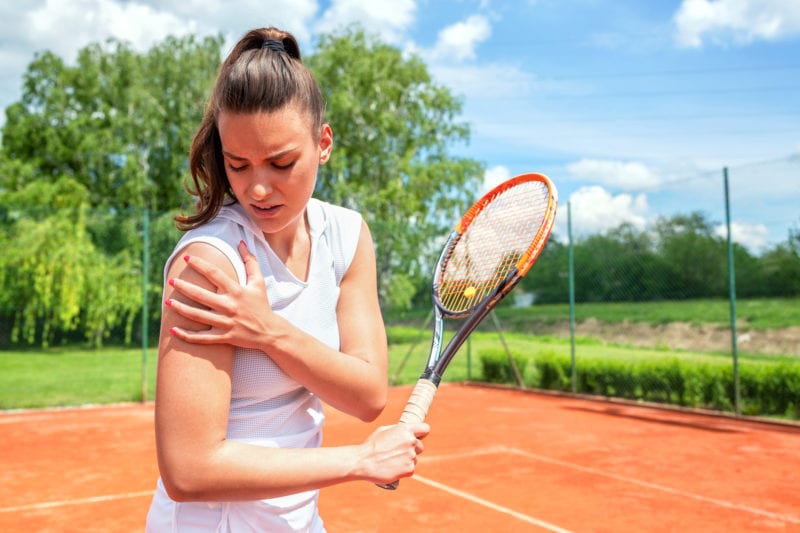
Combat Tennis Blisters
Share

Tennis blisters are tricky because they form for a multitude of reasons and in many different areas. Common areas include the hands and feet and often the culprit is the gear in use. New and veteran tennis players are all susceptible to blisters but, there is some good news! They can be prevented!
Causes
Blisters form when there is continuous pressure and friction rubbing against your skin. In many cases, the friction is between your skin and another object. But blisters can also form from skin on skin contact as well. Anywhere there is friction with your skin, blisters are likely to develop.

New tennis players often form blisters due to the fact that their body is still adapting to the new movements and unfamiliar stress it is receiving from learning a new sport. Veteran players may form calluses when the blisters heal, but even this tough skin attracts blisters underneath if not properly prevented.
The constant and repetitive swings of tennis cause friction between your palm and the racket, often forming blisters. Sweat magnifies the problem because sweat leaves salty deposits in between your hand and the racket grip. This salt layer deteriorates the outermost layer of the skin leaving it unprotected and likely to blister.
Another culprit in developing blisters can be ill fitting tennis shoes . These blisters develop when there is excessive heat built up in the sole of the shoe causing your feet to sweat more. This sweat promotes friction and blisters will follow. The wrong sized shoe allows your foot to move around causing excessive friction and heat.
Treatment
Tennis blisters caused by friction eventually heal on their own. It is suggested you do not pop a blister unless absolutely necessary because this will increase the chance of infection. If they do need to be dealt with, use a sterilised needle to puncture the blister and release the fluid inside. Clean the wound and surrounding area, cover with gauze and bandages. We also recommend applying Body Glide® balms between the blisters and the bandages to reduce friction. With any open blister, use an antibiotic ointment to prevent infection. If the problem continues to worsen seek professional medical attention as it could be an infection.
Prevention
The best way to prevent tennis blisters is by choosing the right gear. Grip size plays the largest factor when blisters begin forming on the hands.

Find the size that fits your hand the best and does not leave a lot of space in your grip. It is recommended to increase the grip either with a new racket or with thicker grip tape. When blisters start forming, it indicates the grip is usually too small leaving too much space between it and your hand.
Much like grip size, having the proper fitting clothes and shoes can greatly prevent tennis blisters from forming. Improper sizing can lead to too much friction and excessive moisture/salt build up from sweat.
Wrapping affected areas or wearing gloves can also help relieve stress and friction. Using Body Glide® balms greatly reduce friction and chafing in tender areas. These balms help your outer layer of skin from deteriorating which cause blisters in the first place.
Utilising tennis towels and arm bands can help with your sweat management. Wiping your hands and prone areas dry in between matches will reduce the amount of moisture present. Tennis wrist sweatbands absorb sweat from dripping onto your grip and decrease friction.
